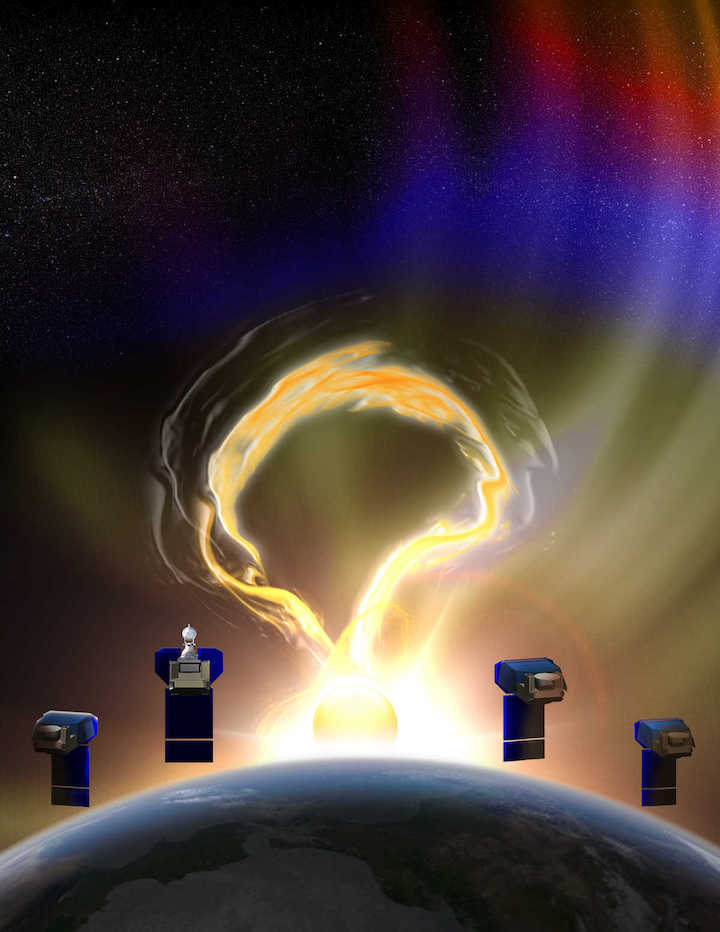20.04.2020

On April 8, 2020, the Polarimeter to UNify the Corona and Heliosphere (PUNCH) mission achieved an important milestone, passing NASA’s critical System Requirements Review/Mission Definition Review (SRR/MDR). Southwest Research Institute is leading PUNCH, a NASA Small Explorer (SMEX) mission that will integrate understanding of the Sun’s corona, the outer atmosphere visible during eclipses, with the tenuous “solar wind” filling the solar system.
“For over 50 years, we’ve studied the solar corona by remote imaging and the solar wind by direct sampling,” said PUNCH Principal Investigator Dr. Craig DeForest of SwRI’s Space Science and Engineering Division. “PUNCH will bridge that gap by imaging the solar wind itself as it leaves the outermost reaches of the Sun’s corona.”
The solar wind, a supersonic stream of charged particles emitted by the Sun, fills the heliosphere, the bubble-like region of space encompassing our solar system. Its boundary, where the interstellar medium and solar wind pressures balance, ends the sphere of the Sun’s influence.
PUNCH is a constellation of four separate suitcase-sized satellites scheduled to launch in 2023 into a polar orbit formation. One satellite carries a coronagraph, the Narrow Field Imager, that images the Sun’s corona continuously. The other three each carry SwRI-developed wide-angle cameras, Wide Field Imagers (WFI), optimized to image the solar wind. These four instruments work together to form a single field of view spanning 90 degrees of the sky, centered on the Sun.
“Preparing for the SRR/MDR review was an unexpected challenge,” DeForest said. “Team members have been working at home for over three weeks, yet they met the challenge and presented their design in written and oral presentations culminating in the positive decision from our review board.”
SRR/MDR is a major milestone of mission development. It checks the flow of engineering and mission definition as activities segue into the design phase.
“I’m very proud of this team for what they’ve accomplished during less than ideal collaboration conditions,” said DeForest. “While spacecraft are constructed out of aluminum and exotic metals, they are initially made of requirements documents.”
The SMEX program provides frequent flight opportunities for world-class scientific investigations from space using innovative, efficient approaches within the heliophysics and astrophysics science areas. In addition to leading the PUNCH science mission, SwRI will operate the mission and build the four spacecraft and three WFIs. The PUNCH team includes the U.S. Naval Research Laboratory, which is building the Narrow Field Imager, and the Rutherford Appleton Laboratory in Oxfordshire, England.
Quelle: Southwest Research Institute
